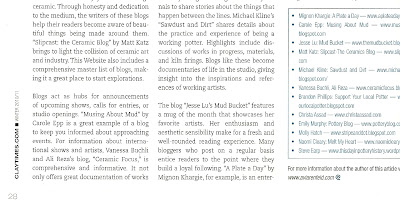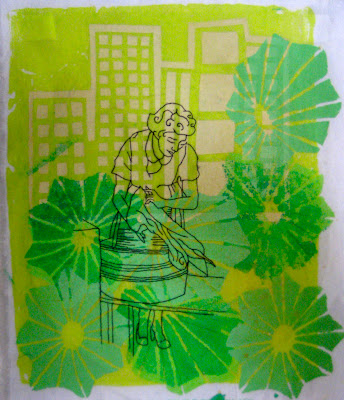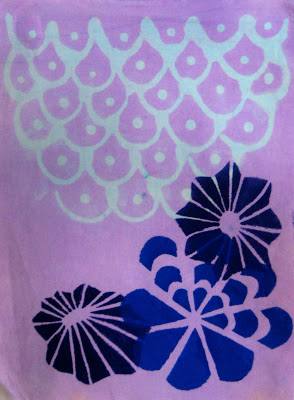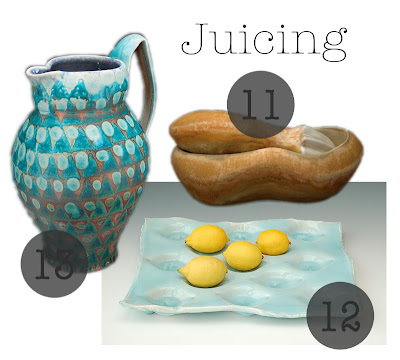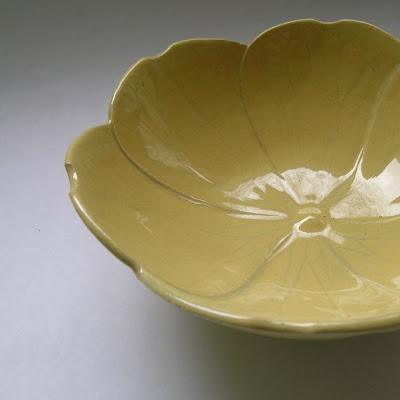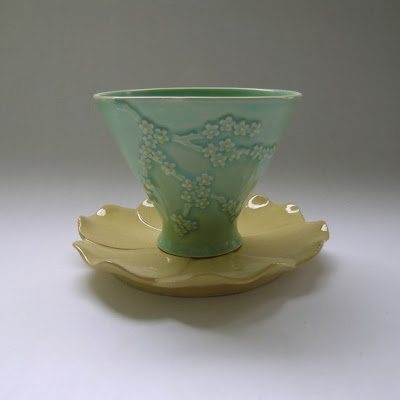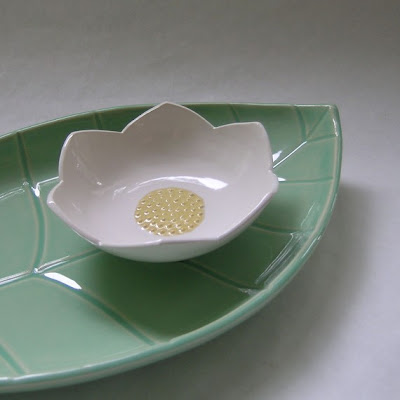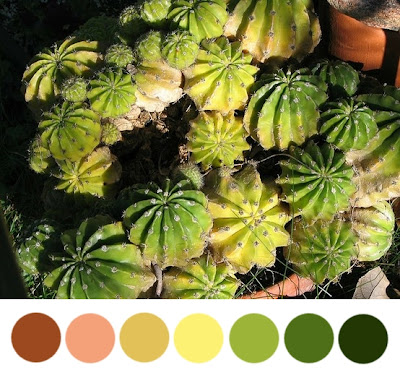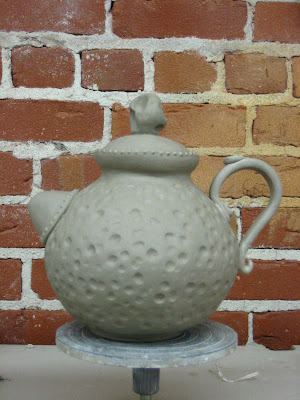Here are some images of the work I got to create during
Diana Fayt's workshop last weekend. It was so much fun! I haven't been to a workshop where I got to make something in some time. It was really nice to be able to play in such a different style then I am used to and it loosened up my ideas about working on the surface. I think workshops where you actually get to make something are really important for artists. When you are working in such an uninhibited situation where you're investment in the work is so much less than in your own studio work, you are free to unlock new ideas that maybe you never even really knew existed in the recesses of your imagination. I feel like the images I chose to bring to Diana's studio, and then work with during the workshop, were selected so spontaneously that I came across this intuitive content choice that I probably wouldn't have otherwise.
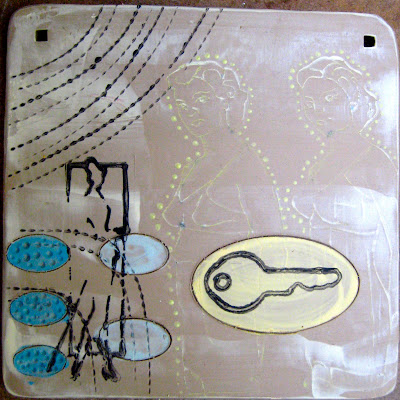
Does that make sense? When you choose things quickly and without the limitations of your own judgement, surprises happen. My textiles professor,
Vic de la Rosa, is prodding us to do this in our Surface Design class. We've been doing sampling and automatic drawing like crazy, just picking up random materials and then employing them randomly to create patterns and compositions on fabric. Diana's workshop was a similar experience for me; and the images I chose to make the tiles in her studio have already found their way into my textile work. Who would've known?
Now the only think that is racking my brain is this concept of copyright. Ugh! What a bummer. Does anyone have experience with this issue in their own work, regarding derivative images, from old magazines, newspapers, and such?
Anyway onto some of the things I learned at Diana's workshop:
-Recycled paper withers against the moisture of wet clay. Use non-recycled paper or other non-paper materials for image transfer if you care to use the image repeatedly or don't want the hassle of picking paper pulp off your surface. I had to learn this the hard way.
-
There are stamp-pads for clay! Made by
Minnesota Clay Company. I knew I should have been collecting stamps all this time.
-Make your own rules! This was my favorite. We are very beholden to tradition in ceramics, whatever that means, and I think this can have a stunting or lagging effect on the evolution of our art form at times. Sometimes we have to remember that rules were made to be broken, in fact, that's exactly how new rules are made! :)
It goes without saying I think, but I'll say it anyway. If you ever get the chance to take a workshop with Diana by all means do it. She is a great teacher, incredible artist, and a lovely person. Did I tell you she set out tea and coffee and cookies for us? Isn't that so thoughtful? I was truly impressed by her hospitality and the relaxed energy in her studio. I can't wait to visit again. And how lucky? It just so happens that my Professional Practices class is visiting her studio in a couple of weeks. I get to pick my tiles up then, all glazed and fired. Eek! I can't wait.
Diana has three more workshops scheduled this year, thought I'm not sure how many slots are left, so check them out quickly if you're interested. She will be giving another one-day workshop in
her own studio here in San Francisco in April, a five-day workshop at
Sierra Nevada College in Lake Tahoe in July, and a three-day workshop at
Mudfire in Decatur, Georgia in September. Sign up if you can, you'll be so glad you did. :)


